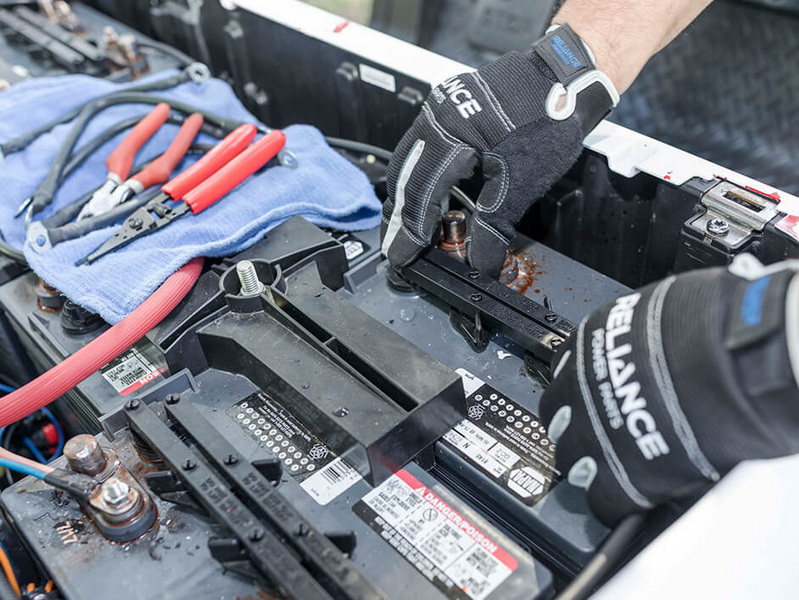Content Menu
● Understanding Golf Cart Batteries
● Common Signs of Battery Issues
● Step-by-Step Guide to Fixing Golf Cart Batteries
>> Step 1: Safety First
>> Step 2: Inspect the Batteries
>> Step 3: Clean the Batteries and Connections
>> Step 4: Check Water Levels
>> Step 5: Test Battery Voltage
>> Step 6: Perform a Load Test
>> Step 7: Charge the Batteries
>> Step 8: Equalize the Batteries
>> Step 9: Replace Faulty Batteries
● Advanced Battery Repair Techniques
>> Desulfation
>> Refurbishing Electrolyte
● Preventive Maintenance
● When to Seek Professional Help
● Environmental Considerations
● Conclusion
● FAQ
>> 1. How often should I water my golf cart batteries?
>> 2. Can I mix old and new batteries in my golf cart?
>> 3. How long do golf cart batteries typically last?
>> 4. Is it normal for golf cart batteries to get hot while charging?
>> 5. Can I use car batteries in my golf cart?
Electric golf carts have become increasingly popular for their convenience and eco-friendly nature. However, like any battery-powered vehicle, they can experience issues with their power source over time. This comprehensive guide will walk you through the process of diagnosing, troubleshooting, and fixing common electric golf cart battery problems, ensuring your cart stays on the green for years to come.

Understanding Golf Cart Batteries
Before diving into the repair process, it's essential to understand the basics of golf cart batteries. Most electric golf carts use deep-cycle lead-acid batteries, which are designed to provide steady power over long periods. These batteries typically come in 6, 8, or 12-volt configurations, with most carts using a series of batteries to achieve the required voltage (usually 36 or 48 volts).
Common Signs of Battery Issues
Recognizing the symptoms of battery problems is the first step in fixing your golf cart. Here are some common signs to watch out for:
1. Reduced range or power
2. Slow acceleration
3. Difficulty climbing hills
4. Unusual noises during operation
5. Batteries draining quickly or not holding a charge
6. Visible corrosion on battery terminals
If you notice any of these issues, it's time to investigate further and potentially repair your golf cart batteries.
Step-by-Step Guide to Fixing Golf Cart Batteries
Step 1: Safety First
Before beginning any work on your golf cart batteries, ensure you're taking proper safety precautions:
- Wear safety goggles and gloves to protect against battery acid
- Work in a well-ventilated area
- Disconnect the main power source
- Have a baking soda solution ready to neutralize any acid spills
Step 2: Inspect the Batteries
Start with a visual inspection of your batteries:
1. Check for any cracks, leaks, or bulging in the battery cases
2. Look for corrosion on the terminals and connections
3. Ensure all cables are securely connected
Step 3: Clean the Batteries and Connections
If you find corrosion:
1. Mix a solution of baking soda and water
2. Use a wire brush to scrub the corroded areas
3. Rinse with clean water and dry thoroughly
4. Apply a battery terminal protector spray to prevent future corrosion
Step 4: Check Water Levels
For flooded lead-acid batteries:
1. Remove the cell caps
2. Ensure the water level covers the plates in each cell
3. If low, add distilled water until the plates are just covered
4. Do not overfill, as the electrolyte expands during charging
Step 5: Test Battery Voltage
Using a multimeter:
1. Set the multimeter to DC voltage
2. Touch the probes to the positive and negative terminals of each battery
3. A fully charged 6V battery should read around 6.3V, an 8V battery around 8.4V, and a 12V battery around 12.7V
4. If readings are significantly lower, the battery may need charging or replacement
Step 6: Perform a Load Test
A load test can determine if a battery can hold a charge:
1. Use a battery load tester
2. Apply a load equal to half the battery's cold cranking amp rating for 15 seconds
3. If the voltage drops below 9.6V for a 12V battery, the battery may need replacement
Step 7: Charge the Batteries
If voltage is low but the batteries pass the load test:
1. Connect the charger to the golf cart
2. Ensure the charger is set to the correct voltage for your battery system
3. Allow the batteries to charge fully (usually 8-10 hours)
4. After charging, retest the voltage
Step 8: Equalize the Batteries
Equalization can help restore battery capacity:
1. Check if your charger has an equalization setting
2. If available, run an equalization charge every 4-6 weeks
3. This process helps remove sulfation from the battery plates
Step 9: Replace Faulty Batteries
If a battery consistently underperforms:
1. Identify the faulty battery through individual voltage tests
2. Disconnect all cables, noting their positions
3. Remove the old battery and replace it with a new one of the same type and capacity
4. Reconnect all cables in their original positions
5. Charge the entire battery bank before use
Advanced Battery Repair Techniques
For those comfortable with more advanced repairs, consider these techniques:
Desulfation
Sulfation is a common cause of battery failure. To combat this:
1. Use a battery desulfator device
2. Connect the desulfator to the battery
3. Allow it to run for several days to break down sulfate crystals
Refurbishing Electrolyte
In some cases, you can refresh the battery's electrolyte:
1. Carefully drain a portion of the old electrolyte
2. Replace with a mixture of Epsom salt and distilled water
3. Charge the battery and monitor performance
Preventive Maintenance
To extend the life of your golf cart batteries:
1. Keep batteries clean and dry
2. Check water levels monthly
3. Charge batteries after each use
4. Avoid deep discharges
5. Store the golf cart in a cool, dry place
6. Perform regular voltage checks
When to Seek Professional Help
While many battery issues can be resolved at home, some situations require professional assistance:
- If you're uncomfortable working with electrical systems
- When dealing with sealed batteries that can't be opened
- If you suspect internal battery damage
- When battery issues persist after trying the above steps
Environmental Considerations
When replacing or disposing of golf cart batteries, always do so responsibly:
- Recycle old batteries at authorized recycling centers
- Never dispose of batteries in regular trash
- Consider using more environmentally friendly battery options when replacing, such as lithium-ion batteries
Conclusion
Fixing electric golf cart batteries can be a straightforward process with the right knowledge and tools. By following this guide, you can diagnose common issues, perform basic repairs, and maintain your golf cart batteries for optimal performance. Remember that regular maintenance is key to prolonging battery life and ensuring your golf cart is always ready for the next round.

FAQ
1. How often should I water my golf cart batteries?
Check water levels monthly and add distilled water as needed. Typically, you'll need to add water every 4-6 weeks, depending on usage and climate.
2. Can I mix old and new batteries in my golf cart?
It's not recommended to mix old and new batteries. This can lead to uneven charging and discharging, potentially damaging both the old and new batteries.
3. How long do golf cart batteries typically last?
With proper maintenance, golf cart batteries can last 4-6 years. However, this can vary based on usage patterns, charging habits, and environmental factors.
4. Is it normal for golf cart batteries to get hot while charging?
A slight warmth is normal, but batteries should never become hot to the touch. If they do, stop charging immediately and have the batteries and charger inspected by a professional.
5. Can I use car batteries in my golf cart?
No, car batteries are not suitable for golf carts. Golf carts require deep-cycle batteries designed for repeated discharge and recharge cycles, unlike car batteries which are designed for short bursts of high power.









































